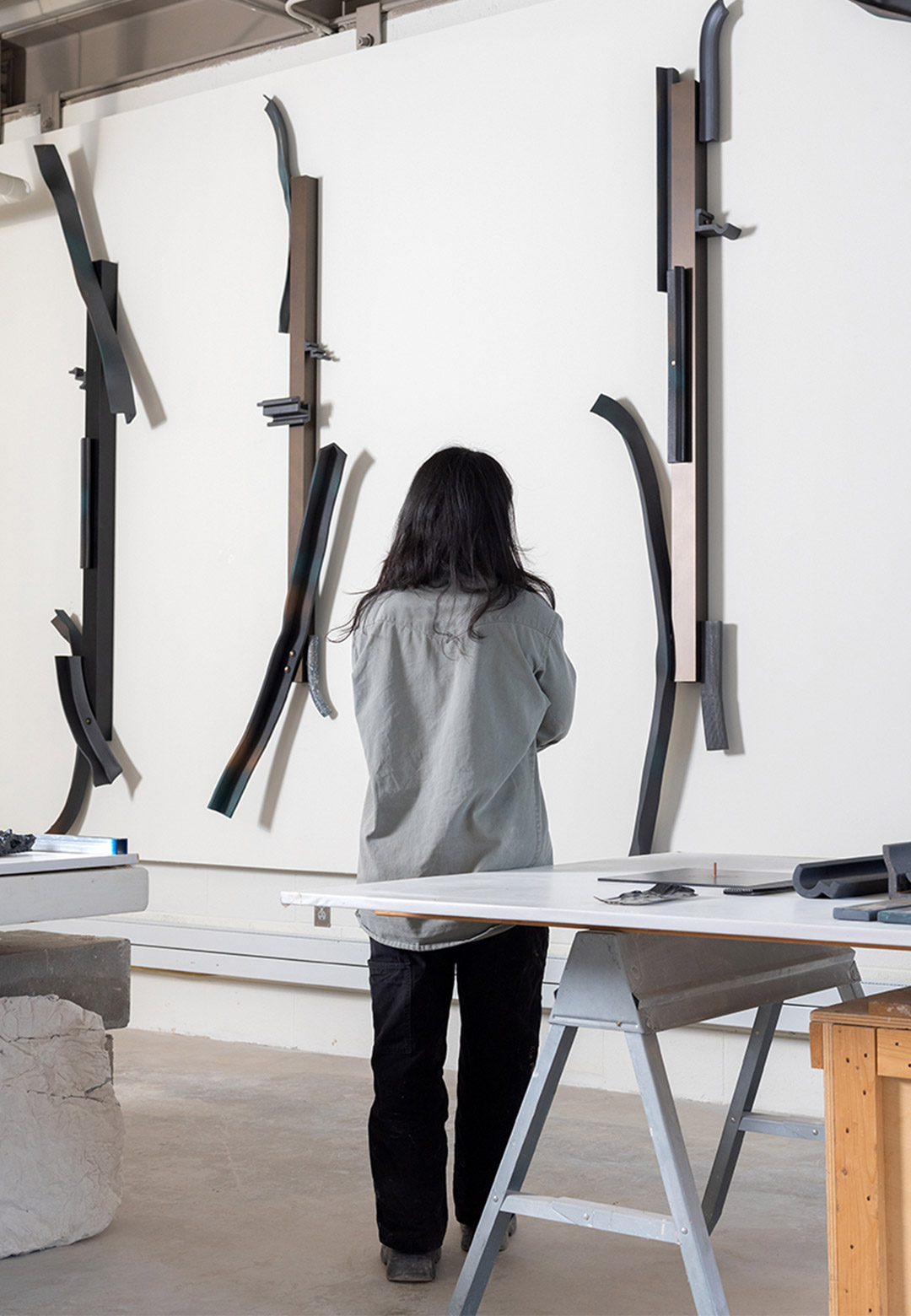Ian McDonald has been fascinated by ceramics since his childhood. Having taken up an apprenticeship as a teenager with local potters in California where he grew up, McDonald has worked with clay for over two decades now. His art, ranging from sculpture to mixed-media installations, has been displayed in museums throughout the US, Europe and Japan. McDonald is currently Head of Ceramics at the famed Cranbrook Academy of Art in Michigan. It's safe to say that for the ceramicist, clay is a lifestyle. "I've always thought about ceramics as something that will last forever," the American artist has been quoted as saying in an interview about a solo exhibition in 2022.
McDonald's ceramics are precise and clean in a way that ceramic art is rarely seen to be. In fact, in many recent works, the artefacts could easily be mistaken for machine parts, an enviable precision that is the result of decades of practice. In a new series, McDonald experiments with ceramic extrusions for larger-scale wall works. These pieces of sculptural art, reminiscent of twisted beams and cogs soldered together (but in fact, completely made from ceramic), are meant to be "objects as a place to hang my hats or jackets," as McDonald notes. "I prefer a small idea, a place to start. I feel I have room to roam when I start with a functional form as a core idea, even though in the end, I'm aware I simply may not get there," he continues, expanding on the conceptualisation of the pieces.
The process of making, then, is as much about this step-by-step intuition, adding and subtracting as the piece progresses as it is working with and exploring the potential of clay. Each piece begins, as McDonald tells STIR, with a die-cast, which is customised as per the ceramic artist’s drawings. "It's a serious negotiation between what's available and what's possible. Each extruded form, taken slowly through the process, imagining each object might make it to the rail on the wall and maybe even, as a place to hang my hat," says McDonald. Long ceramic components appear to be beams, with small sprockets, also crafted in ceramic added to act as hooks or embellishments. Each feels like it makes up part of a cohesive whole.
The simple play in the perception of the artefacts—are they aluminium or are they not—is achieved not only through custom fabrication and manipulation of form but by the surface treatment for each component. As McDonald elaborates, each work is finished with Terra Sigillata (highly refined clay slip) and glaze and fired in gas kilns. This gives each part a sheen where they easily pass off as steel members, especially given their distinctive profile.
Elaborating on the final forms for the artefacts, McDonald shares with STIR, "The parts are initially punctured with holes in their wet state after extrusion. At this point in the process, I am mainly focused on producing an index of objects from which I will improvise or edit later. Ideas in the moment are worked out quickly…In the end, the objects are bolted to a threaded centre aluminium tube that allows [them] to be partially built on the floor and partially built on the wall." The playful nature of the artefacts, extruded from wet clay yet with sharp features, not only displays McDonald's meticulous mastery of craftsmanship but shows the possibilities of what craft is capable of—it is not simply handmade but in fact, can be extremely steampunk.






 Sign in with email
Sign in with email










What do you think?